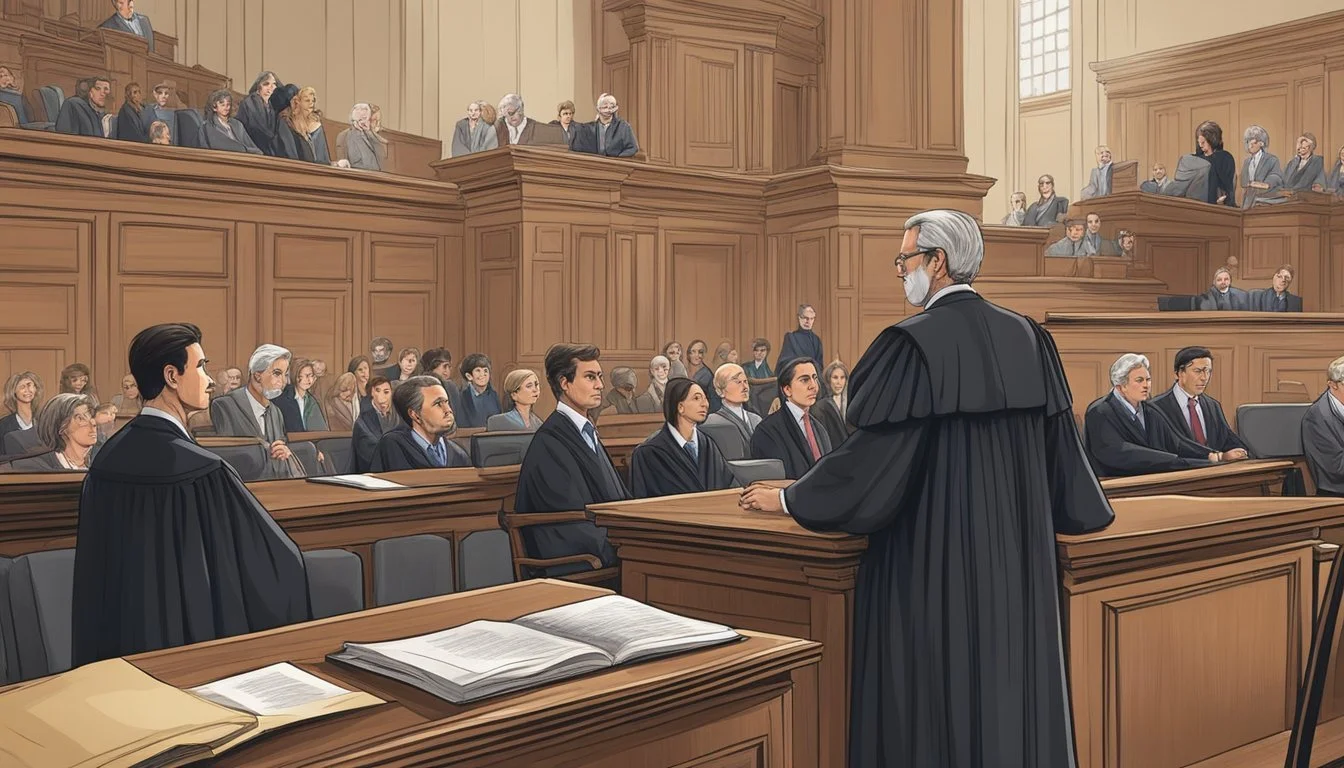Green River, Running Red by Ann Rule: True Crime Classic Explores Seattle's Infamous Serial Killer
Ann Rule's "Green River, Running Red" delves into one of America's most notorious serial killer cases. The book examines the two-decade search for the Green River Killer, who murdered at least 71 women in Washington State during the 1980s and 1990s. Rule meticulously details the investigation, victims' stories, and the eventual capture of Gary Leon Ridgway.
The author's extensive research shines through as she draws from over 95,000 pages of official police records, transcripts, photographs, and maps. Rule's compelling narrative brings to life the victims, many of whom were young women and teenagers. She explores their backgrounds and the circumstances that led them into the killer's path.
As a true crime expert, Rule provides unique insights into the case. She began following the murders in July 1982 when the first victim, Wendy Lee Coffield, was discovered in the Green River. The book offers a chilling portrayal of Ridgway, a seemingly ordinary man who evaded capture for years while continuing his brutal spree.
The Author: Ann Rule
Ann Rule was a prolific true crime writer known for her meticulous research and compelling storytelling. She authored numerous bestsellers and became a respected voice in the genre through her extensive experience and dedication to victim advocacy.
Early Life and Career
Born in 1931 in Michigan, Ann Rule grew up in a law enforcement family. Her early career included stints as a police officer in Seattle and a caseworker for the Washington State Department of Public Assistance.
These experiences provided valuable insights into criminal behavior and investigative techniques. Rule's background in psychology from the University of Washington further enhanced her understanding of human nature.
Her writing career began with freelance articles for true detective magazines in the 1960s. This work allowed her to hone her skills in crime reporting and analysis.
Transition to True Crime Writing
Rule's breakthrough came with her first book, "The Stranger Beside Me" (1980), detailing her personal connection to serial killer Ted Bundy. This unique perspective catapulted her into the spotlight as a true crime author.
She went on to write over 30 books, many becoming New York Times bestsellers. Rule's approach combined thorough research with compassionate portrayals of victims and their families.
Her work on the Green River Killer case, culminating in "Green River, Running Red," showcased her dedication. Rule spent two decades following the investigation, demonstrating her commitment to telling complex, long-form crime stories.
Overview of 'Green River, Running Red'
Ann Rule's "Green River, Running Red" chronicles the investigation of America's most prolific serial killer. The book delves into the chilling details of the Green River Killer case, exploring the murderer's methods and the extensive police work required to bring him to justice.
Synopsis
"Green River, Running Red" recounts the true story of Gary Leon Ridgway, the Green River Killer. Ridgway murdered at least 49 women in Washington State during the 1980s and 1990s. The book follows the two-decade-long investigation, detailing the challenges faced by law enforcement.
Rule's narrative includes interviews with victims' families and insights from investigators. She also describes her personal connection to the case, as Ridgway had attended her book signings and lived nearby.
The story culminates with Ridgway's arrest in 2001 and his subsequent confession to the murders.
Genre and Style
"Green River, Running Red" is a true crime book that combines meticulous research with compelling storytelling. Rule's writing style is known for its attention to detail and empathetic portrayal of victims.
The book incorporates elements of investigative journalism, psychological analysis, and courtroom drama. Rule's background as a former police officer lends authenticity to her descriptions of law enforcement procedures.
Her narrative approach balances factual reporting with a suspenseful, almost novelistic quality. This style helps engage readers while maintaining respect for the gravity of the subject matter.
Critical Reception
"Green River, Running Red" received generally positive reviews from critics and readers alike. Many praised Rule's thorough research and her ability to humanize the victims rather than sensationalize the crimes.
The book was commended for its comprehensive coverage of the case, including details that had not been widely reported. Critics appreciated Rule's balanced approach, which explored the investigation's complexities without glorifying the killer.
Some reviewers noted the book's length and level of detail as potential drawbacks for casual readers. However, most agreed that it served as a definitive account of the Green River Killer case.
The Green River Killer
The Green River Killer terrorized the Seattle area in the 1980s and 1990s, murdering dozens of women. Gary Leon Ridgway was ultimately identified as the perpetrator of these heinous crimes. His case became one of the most extensive and long-running serial killer investigations in U.S. history.
Profile of Gary Ridgway
Gary Leon Ridgway was born on February 18, 1949, in Salt Lake City, Utah. He grew up in a troubled household and struggled in school due to dyslexia. As an adult, Ridgway worked as a painter at a truck factory and maintained a seemingly normal life.
Ridgway married three times and had a son. He was described by neighbors as polite and unassuming. This facade masked his dark impulses and violent tendencies towards women, particularly those involved in sex work.
Despite his average intelligence, Ridgway demonstrated cunning in evading capture for nearly two decades. He passed a polygraph test in 1984 and continued his killing spree until advances in DNA technology led to his arrest in 2001.
Timeline of the Murders
The Green River killings began in July 1982 with the discovery of Wendy Lee Coffield's body in the Green River. Over the next two years, the body count rose rapidly, with victims found in and around the river.
1982-1984: The majority of known murders occurred during this period.
1985-1990: Killings continued but at a slower pace.
1991-1998: Murders became more sporadic.
2001: Ridgway was arrested based on DNA evidence.
2003: Ridgway pleaded guilty to 48 counts of aggravated first-degree murder.
The victims were primarily young women involved in sex work or facing personal struggles. Ridgway's method typically involved strangulation, and he often returned to the dump sites to engage in necrophilia.
Investigation Breakdown
The Green River Killer case spanned nearly two decades, involving extensive police work and numerous challenges. Detectives faced a complex investigation with multiple victims and limited evidence.
Police and Detective Work
Investigators meticulously gathered evidence from crime scenes and victim remains. They interviewed hundreds of potential witnesses and suspects. Detectives created detailed victim profiles to identify patterns and potential connections.
Task forces were formed to coordinate efforts across jurisdictions. Police utilized advanced forensic techniques, including DNA analysis, as technology progressed. Undercover operations were conducted to gather intelligence on potential suspects.
Detectives maintained a massive database of information related to the case. They worked closely with FBI profilers to develop a psychological profile of the killer.
Challenges and Setbacks
The vast geographic area of the killings complicated the investigation. Many victims were sex workers, making identification difficult in some cases. Limited physical evidence at dump sites hindered progress.
Public pressure and media scrutiny added stress to the investigation team. False leads and confessions diverted resources from productive avenues. Budget constraints periodically hampered investigative efforts.
The killer's ability to avoid detection for years demoralized investigators. Changes in task force leadership and personnel disrupted continuity. Advances in forensic technology came too late for some evidence that had degraded.
Victims' Portraits
Ann Rule's "Green River, Running Red" provides intimate glimpses into the lives of the women and girls murdered by the Green River Killer. The book honors their memories and humanizes them beyond their tragic fates.
Remembering the Lives Lost
Rule painstakingly researched the backgrounds of the victims, compiling details from police records, interviews, and photographs. She presents portraits that reveal the individuality of each woman - their hopes, struggles, and relationships.
Many victims came from troubled homes or fell into prostitution and drug use. Rule avoids judgment, instead highlighting their humanity. She includes photos showing both the hardened looks of some and the youthful innocence of others.
The author describes victims like 16-year-old Wendy Coffield, whose body was the first discovered. Rule recounts Wendy's difficult childhood and her mother's anguish at her disappearance.
By telling these women's stories, Rule ensures they are remembered as more than just victims or statistics. She gives them dignity and reminds readers of the lives cut short by senseless violence.
Legal Proceedings
The legal proceedings against Gary Leon Ridgway, the Green River Killer, marked a significant chapter in one of America's most notorious serial killer cases. His trial and sentencing brought closure to decades of investigation and uncertainty.
Trial and Sentencing
Gary Leon Ridgway pleaded guilty to 48 counts of aggravated first-degree murder on November 5, 2003. This plea deal allowed him to avoid the death penalty in exchange for his cooperation in locating victims' remains.
Ridgway's sentencing took place on December 18, 2003. Judge Richard Jones imposed 48 consecutive life sentences without the possibility of parole, plus 480 years.
During the sentencing, family members of victims were given the opportunity to address Ridgway directly. Many expressed their grief, anger, and the lasting impact of his crimes.
Ridgway showed little emotion throughout the proceedings. He offered a brief statement, apologizing for the pain he caused but providing no clear explanation for his actions.
The case concluded with Ridgway being transferred to Washington State Penitentiary in Walla Walla to serve his life sentences.
Impact and Legacy
"Green River, Running Red" by Ann Rule had a profound effect on true crime literature and public awareness of serial killers. The book's detailed investigation and empathetic portrayal of victims resonated with readers and law enforcement alike.
Influence on True Crime Genre
Rule's meticulous research and compelling narrative style in "Green River, Running Red" set a new standard for true crime writing. The book demonstrated the importance of humanizing victims rather than sensationalizing the killer. Many authors have since adopted this approach, focusing on the lives and personalities of those affected by crime.
Rule's work also highlighted the value of collaboration between writers and law enforcement. Her extensive access to police records and interviews provided readers with unprecedented insights into the investigation process. This level of detail became a hallmark of high-quality true crime literature.
Ongoing Public Interest
"Green River, Running Red" continues to captivate readers years after its publication. The book's enduring popularity has sparked renewed interest in the Green River Killer case. True crime enthusiasts frequently cite it as a definitive work on the subject.
The book's impact extends beyond literature. It has inspired documentaries, podcasts, and television series exploring the case. These adaptations have introduced new audiences to the story and kept public attention on the victims and their families.
Law enforcement agencies have used "Green River, Running Red" as a case study in serial killer investigations. The book's detailed account of the investigation process serves as a valuable resource for detectives and forensic professionals.
Analyzing the Narrative
Ann Rule's approach to storytelling in "Green River, Running Red" showcases her investigative prowess and ethical considerations. The book's narrative structure and Rule's treatment of sensitive subject matter contribute to its impact as a true crime work.
Rule's Approach to Storytelling
Rule employs a meticulous chronological structure in "Green River, Running Red." She interweaves the victims' stories with the investigation's progression, creating a multifaceted narrative.
The author's attention to detail brings the victims to life, portraying them as individuals rather than mere statistics. This humanizing approach adds depth to the story and honors the lives lost.
Rule's writing style balances factual reporting with engaging prose. She incorporates dialogue and descriptive scenes to maintain reader interest without sacrificing accuracy.
The book's pacing reflects the real-time developments of the case. Rule builds tension as the investigation unfolds, mirroring the frustration and breakthroughs experienced by law enforcement.
Ethical Considerations
Rule demonstrates sensitivity in her portrayal of the victims and their families. She avoids sensationalism, focusing instead on respectful representation.
The author grapples with the challenge of providing a comprehensive account without glorifying the perpetrator. She achieves this balance by dedicating more space to the victims' stories and the investigative process.
Rule addresses the societal factors that contributed to the killer's ability to operate undetected for so long. She examines issues such as bias against sex workers and inadequate resources for vulnerable populations.
The book raises questions about media responsibility in covering ongoing investigations. Rule reflects on her own role as both a journalist and a concerned citizen during the case.







